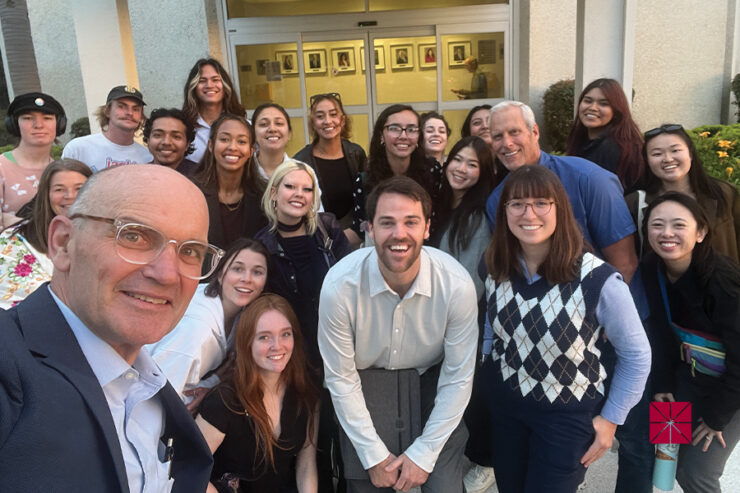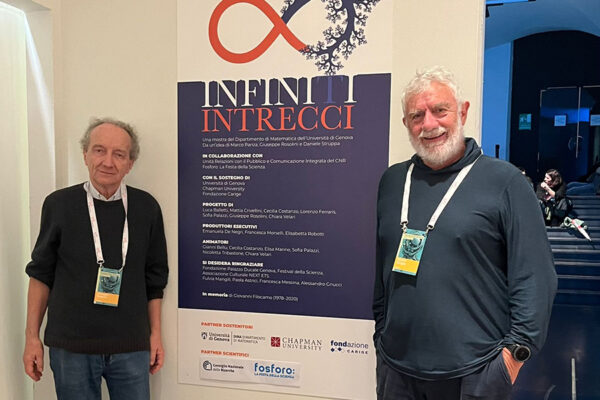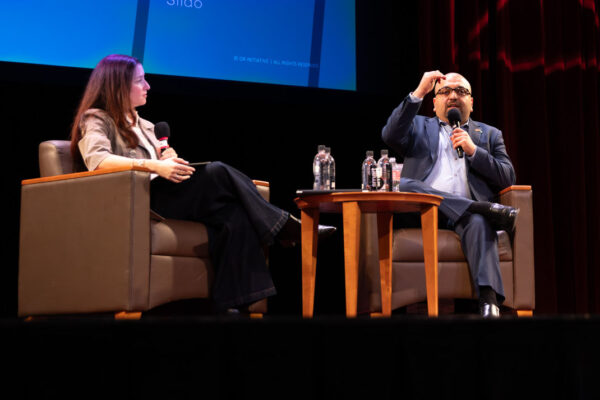To reach California’s ambitious goal to achieve carbon neutrality by 2045, cities throughout the state have been developing sustainability plans to combat the growing risks of climate change.
The plans provide local governments with a roadmap to decrease greenhouse gas emissions through sustainable practices such as renewable energy, recycling and enhanced tree coverage. The information is critical for local leaders to make informed decisions to improve the lives of current and future residents of Orange.
Students from Chapman’s Schmid College of Science and Technology had the opportunity to play a pivotal role in this massive effort through producing a sustainability plan for the City of Orange during the 2024 spring semester. The plan was a Capstone project, which Chapman students majoring in environmental science and policy put together every year in collaboration with a community partner. Students can include the project on their resumes to demonstrate their skills and knowledge to employers.
The sustainability plan identifies sources of greenhouse gas emissions in the city and provides methods to reduce emissions in the future. This is the first step for the city in working towards a more sustainable way forward.
“If you’re going to reduce emissions, it’s important to know where those greenhouse gasses are coming from,” said Professor Tom Piechota, who taught the capstone class. “So this report serves as a baseline for the city and it gives it the ability to look to obtain grant funding for implementing energy projects or water reduction projects. In order to get these grants, cities will need to have a plan.”
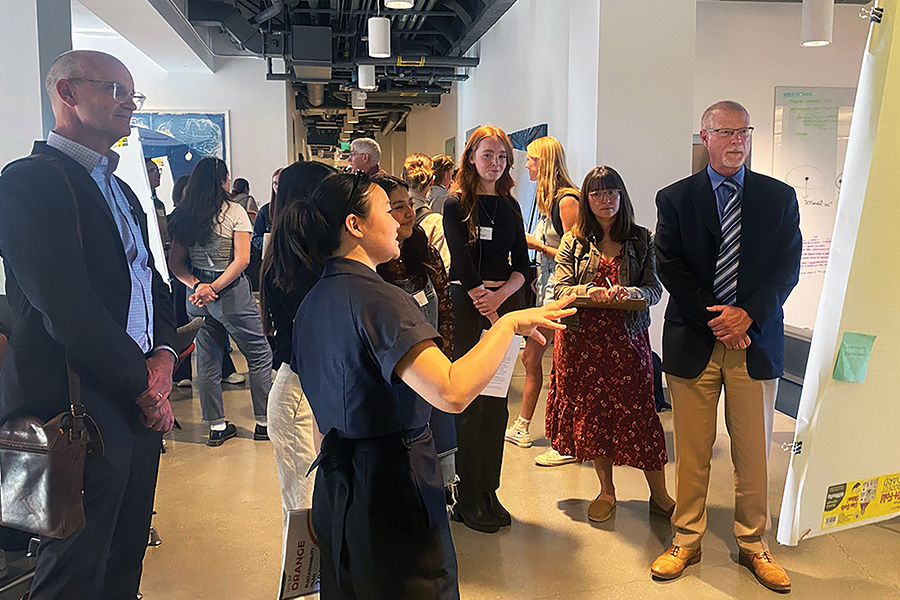
Supporting the Future of Orange
From February through April, 17 environmental science students worked with the local Orange Sustainability Group to develop the plan. The students, all seniors, interviewed City Council members and other stakeholders in the community to put the plan together.
Students had the opportunity to present their plan to the City Council on two occasions, including during a crowded public meeting on May 14.
The students highlighted key findings from the report, showing that greenhouse gas emissions were evenly distributed among residential, commercial and industrial zones.The students recommended education and incentive programs for clean energy, charging stations for electric vehicles, household composting workshops and incentivizing tree planting in urban areas.
The plan outlines how extreme weather is already impacting the city, including flash flooding and the closure of public parks due to intense rainfall. Flood risk is expected to increase with rising temperatures, according to the plan.
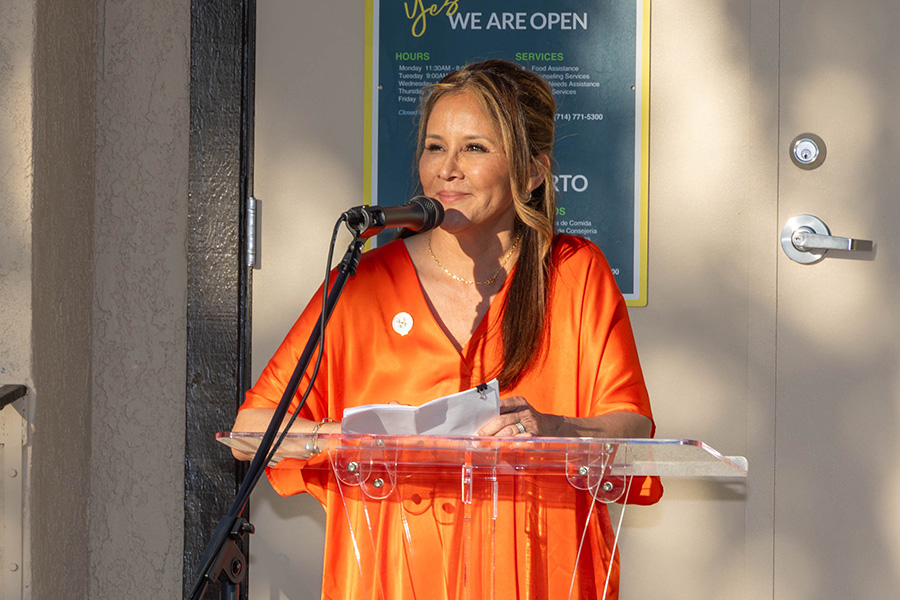
At the council meeting, city leaders praised the students for providing a free plan that will help Orange mitigate or prevent the negative impacts of climate change. Typically, cities have to devote significant funds to consultants to develop a sustainability plan.
“I want to thank you for doing a sustainability plan for the city for free, saving the city money,” said Mayor Dan Slater. “Now that we have a sustainability plan, we can apply for grants that we couldn’t have before.”
Councilman John Gyllenhammer, who helped coordinate the sustainability project, said that he read every page of the report and was sincerely grateful for all the effort that students put into compiling it.
“Your efforts are not going to go to waste, we are going to start looking into what actions we can bring forward in future meetings,” Gyllenhammer said. “I know this is a school project but it’s fantastic what you have done.”
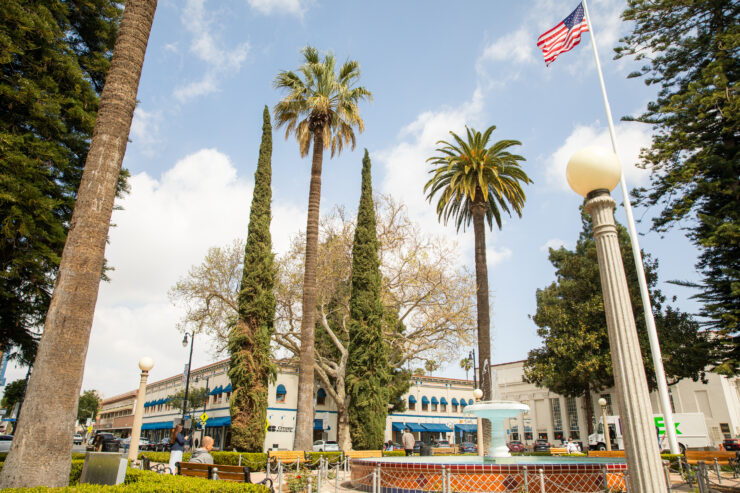
Gaining Practical Experience
Students learned several invaluable skills while working on the project. In addition to putting together a complex report, the students learned the important soft skills required to work with community members with varying beliefs. Mobilizing and engaging with the community is a critical component to driving pivotal environmental change.
The students who compiled the plan include Rama Bedri, Ava Cison, Abby Guzman, Lauren Hu, Cara Hunter, Annalise Jensen, Alyssa Kimura, Citlalli Madrigal, John McGeough, Lorena Munoz, Lesly Perez, Devyn Pon, Eric Ramirez, Anna Straszewski, Hannah Summers, Jocelyn Valdivia and Juliett Vazquez.
“I tried to approach this as a learning experience for them by working on a plan like this — but also how to do it in a way where you learn to work with community partners, where you have to engage with them and learn about their interests also,” Piechota said. “Our students are all very passionate about the environment and sustainability and they need to be able to work with a community that has differing opinions as well.”
Piechota noted that this will be an important addition to students’ resumes. It isn’t common to directly contribute to the well-being of a city and state before even graduating.
“It brings together a lot of what they’ve been doing in their classes and puts it into action,” Piechota said. “It’s a real practical experience for the students.”
